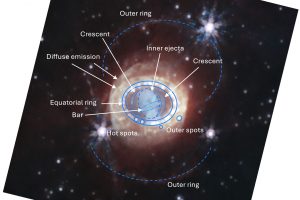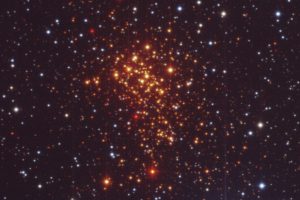The supernova remnant SN 1987A observed by the James Webb Space Telescope

The James Webb Space Telescope, the flagship observatory of NASA/ESA/CSA, has turned its gaze toward the supernova remnant SN 1987A, revealing its structure with an unprecedented level of detail. About 400 years after Kepler supernova, which exploded in 1604, the skies of the southern hemisphere witnessed another supernova relatively close to us. This was SN 1987A, which exploded on
» Read more
